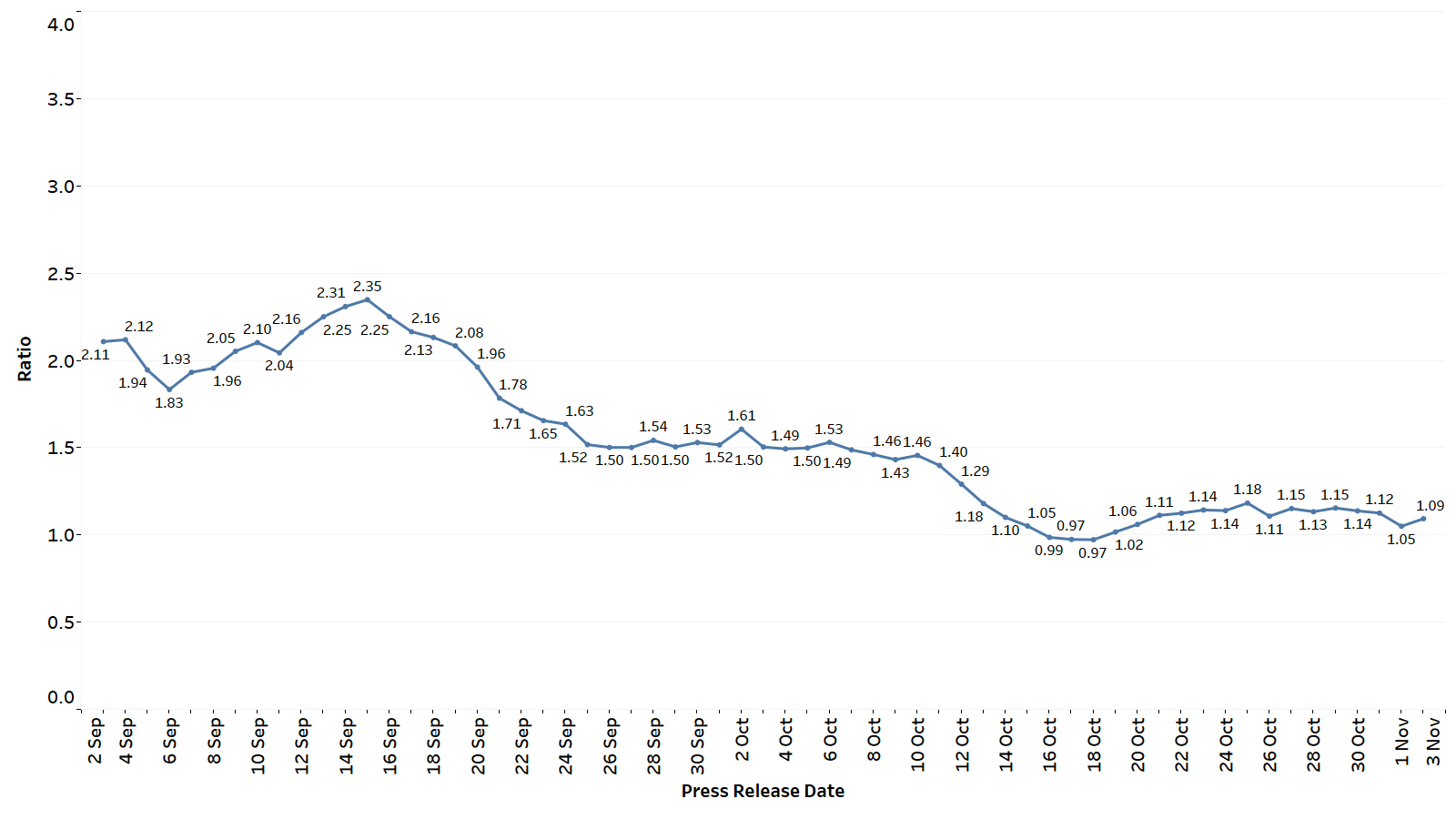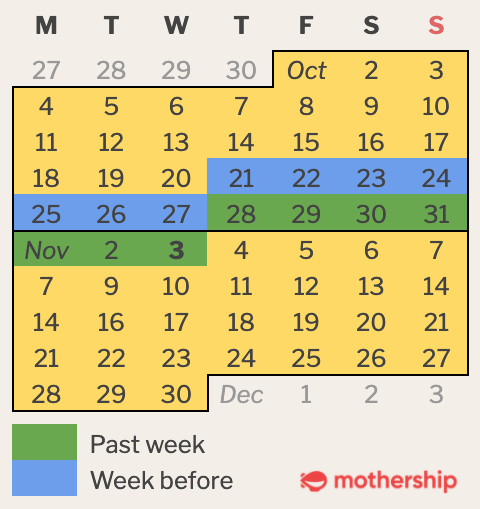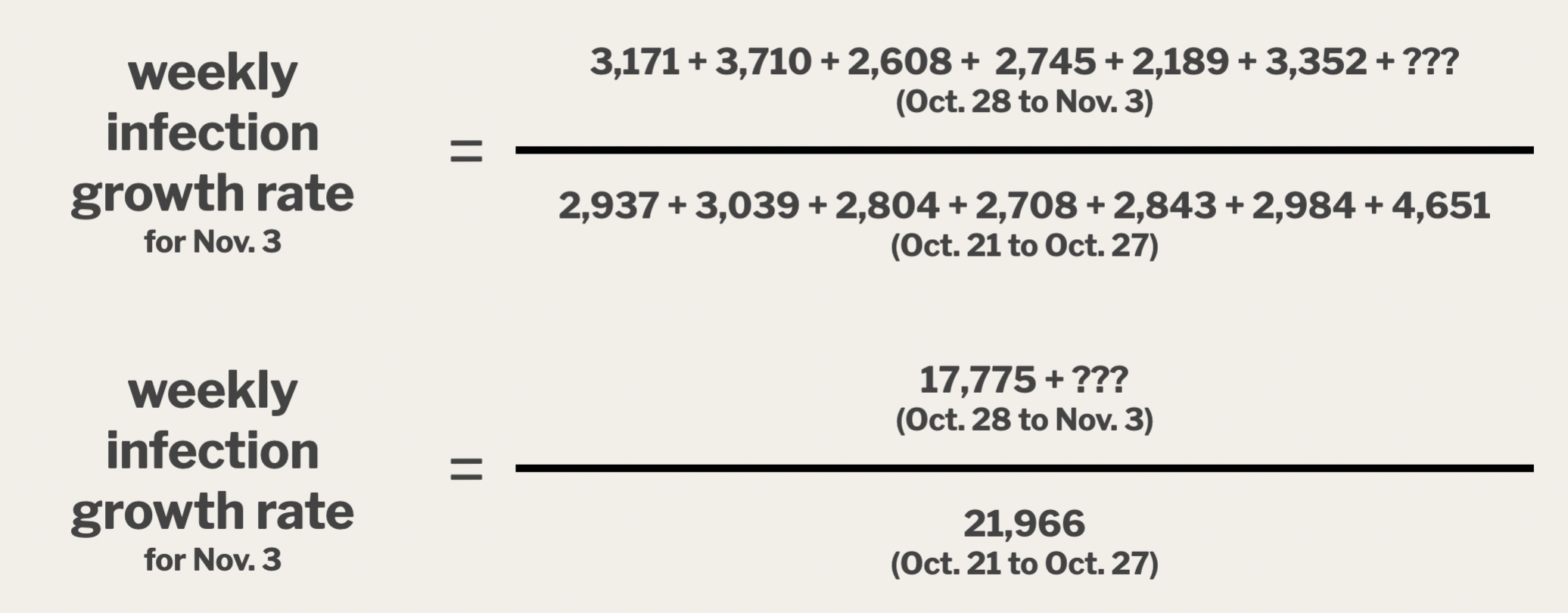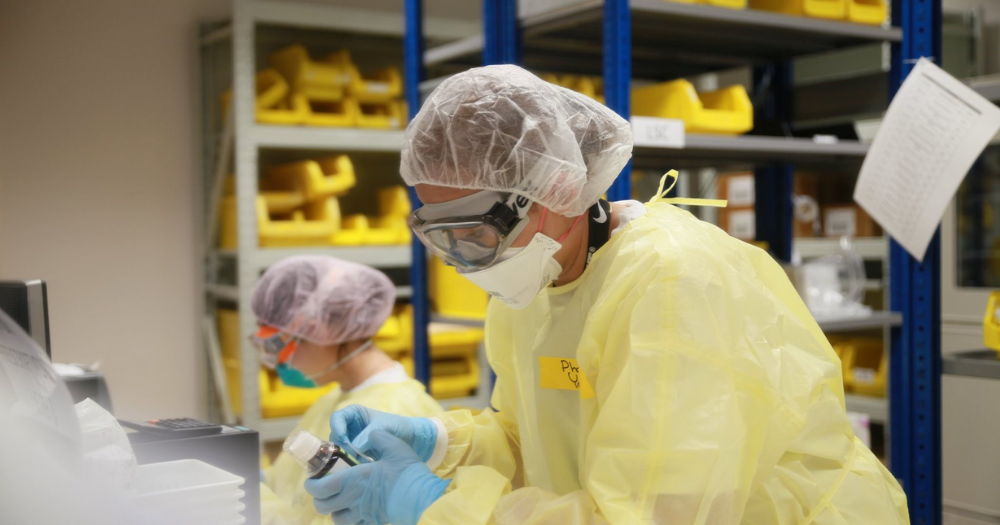Follow us on Telegram for the latest updates: https://t.me/mothershipsg
The Covid-19 situation in Singapore is improving — at least according to one "crude measure" of progress.
That measure is the weekly infection growth rate, which is the ratio community cases in the past week, over the number from week before.
The number has dropped over the past month, from a high point of 2.35 in mid-September, to a low point below 1.0 for three days between Oct. 16 and Oct. 18.
It has hovered around 1.1 for the past two weeks or so, but looks set to drop below 1.0 this evening (Nov. 3).
Some Covid-19 restrictions could be lifted
The weekly infection growth rate dropping below 1.0 could mean that some of the current Covid-19 restrictions will be lifted — if the hospital and ICU situation remains stable.
Earlier in October, the Multi-Ministry Taskforce (MTF) mentioned three areas where restrictions could be lifted if these criteria are met.
They are:
- Allowing team sports to resume. For example, "a group of five people can play football with another group of five people or any other contact sports".
- Resumption of more activities in schools and institutions of higher learning.
- Allowing family members from the same household to dine together in F&B establishments, up to a group of five persons.
At the Oct. 23 press conference, MTF co-chair Lawrence Wong stressed that these are calibrated moves where the ministry assesses the risk to be "acceptable", and further suggested ways that the risks associated with these activities would be managed.
"For example, with activities in schools or IHLs, many of these activities are masked up, so we think the risk is acceptable," he said.
For sports, where participants are maskless and "interacting closely together, especially with contact sports", Wong said the risk can be mitigated by requiring participants to do antigen rapid tests (ART) before participating in the activity.
As for dining, while Wong acknowledged that it is "high risk", he said since the people coming to dine together are from the house same household, the risk can be "mitigated".
Why is this number significant?
The ratio is a "very crude measure" of what epidemiologists call the reproduction rate or "R", Wong explained on Oct. 23.
The R number is a way of rating a disease's ability to spread, and R is the number of people that one infected person will pass on the virus to, on average, according to BBC News.
A R number of 1 means that each infected person will go on to infect one other person on average, while a R number of 0.5 means that every two infected persons will infect one other person on average.
Starting from its Oct. 23 update, the Ministry of Health has been publishing the weekly infection growth rate every day, and a chart showing its movement over the past month
 MOH's chart showing the weekly infection growth rate of Covid-19 infections in Singapore. Image via MOH's update on Nov. 2, 2021.
MOH's chart showing the weekly infection growth rate of Covid-19 infections in Singapore. Image via MOH's update on Nov. 2, 2021.
4,190
Unless there are 4,191 community cases or more, the weekly infection growth rate will be below 1.0.
In other words, if there are 4,190 community cases or less, the weekly infection growth rate falls below 1.0 as of today, Nov. 3.
If you're keen to calculate the numbers yourself, grab your calculator and follow along:
Calculating the weekly infection growth rate
The weekly infection growth rate is the ratio of locally transmitted Covid-19 cases in the past week, over the number from week before.
Basically, this means dividing the total number from the past week by the total number from the week before.

To calculate the weekly infection growth rate for Nov. 3, we'll first need to check which day's case numbers we're supposed to look at.

The "past week" including Nov. 3 would be the seven-day period from Oct. 28 to Nov. 3.
The "week before" would be the seven-day period just preceding that, or, Oct. 21 to Oct. 27.
With that, here's the calculation to be done:

Here's a table of the community cases each day since Oct. 21:
| 21 Oct | 2,937 |
| 22 Oct | 3,039 |
| 23 Oct | 2,804 |
| 24 Oct | 2,708 |
| 25 Oct | 2,843 |
| 26 Oct | 2,984 |
| 27 Oct | 4,651 |
| 28 Oct | 3,171 |
| 29 Oct | 3,710 |
| 30 Oct | 2,608 |
| 31 Oct | 2,745 |
| 1 Nov | 2,189 |
| 2 Nov | 3,352 |
Adding up the days (except for Nov. 3), we get:

If there are 4,191 community cases on Nov. 3, then the number of cases in the past week adds up to 17,775 + 4,191, which is 21,966.
21,996 is the exact number of community cases from the week before, which means that the weekly infection growth rate for Nov. 3 (assuming 4,191 community cases) would be exactly 1.0.
However, if there are 4,190 community cases on Nov. 3, then the number of cases in the past week adds up to 17,775 + 4,190, which is 21,965.
Dividing that by 21,996 (the number of community cases from the week before) the weekly infection growth rate for Nov. 3 (assuming 4,190 community cases) would be 0.99995, just under 1.0.
Is it time to get our basketball gear and make restaurant bookings?
The prospect of a falling weekly infection growth rate is encouraging, as it indicates a consistent downward trend in the daily case numbers.
The number in fact fell below 1.0 for three days between Oct. 16 and Oct. 18, only to rise above 1.0 to around 1.1 for the past two weeks.
The unexpectedly-high number of 5,324 new cases reported on Oct. 27 raises the possibility of an "unusual surge in cases within a relatively short window".
It is thus possible that the MTF will want to monitor the numbers for a few days, even if the weekly infection growth rate does fall below 1.0 for a few consecutive days.
Situation in hospitals/ICUs also important
It would also be important to keep our eyes on the situation in hospitals and in the ICUs, as that also determines whether or not Covid-19 measures will be relaxed, since Wong did mention it as one of the preconditions, way back on Oct. 23.
Prime Minister Lee Hsien Loong also said on the same day that "if the ratio drops below 1, and our hospital and ICU situations remain stable, we can ease some measures".
"We have to travel this road to get to living safely with COVID-19. We want to get there with as few casualties as possible. The course which the MTF is setting reflects our judgment on how best to do this," PM Lee added in his Oct. 23 post.
Here's the latest update on that situation as of Oct. 31, as shared in Parliament by Senior Minister of State for Health Janil Puthucheary on Monday (Nov. 1):- Occupancy rate of all general ward beds was at about 90 per cent.
- Occupancy rate for isolation beds was slightly lower, at 85 per cent.
- 130 Covid-19 patients are critically ill in the ICU, taking up 60 per cent of the 219 ICU beds set aside for Covid-19 patients.
- Non-Covid-19 patients with life-threatening medical conditions also require ICU care, taking up close to 80 per cent of the beds set aside for these patients.
- MOH has been reducing non-Covid ICU beds to cope with more Covid patients.
- ICU staff have been stretched to their limit in the last two weeks — peak of 171 Covid-19 ICU cases has come down to 130.
- MOH is also seeking to expand ICU capacity up to 350 beds to prepare for a potential rise in severe Covid cases, but increasing numbers will continue to stretch healthcare workers.
Top photo via Facebook / Tan Tock Seng Hospital.
Follow and listen to our podcast here
If you like what you read, follow us on Facebook, Instagram, Twitter and Telegram to get the latest updates.
